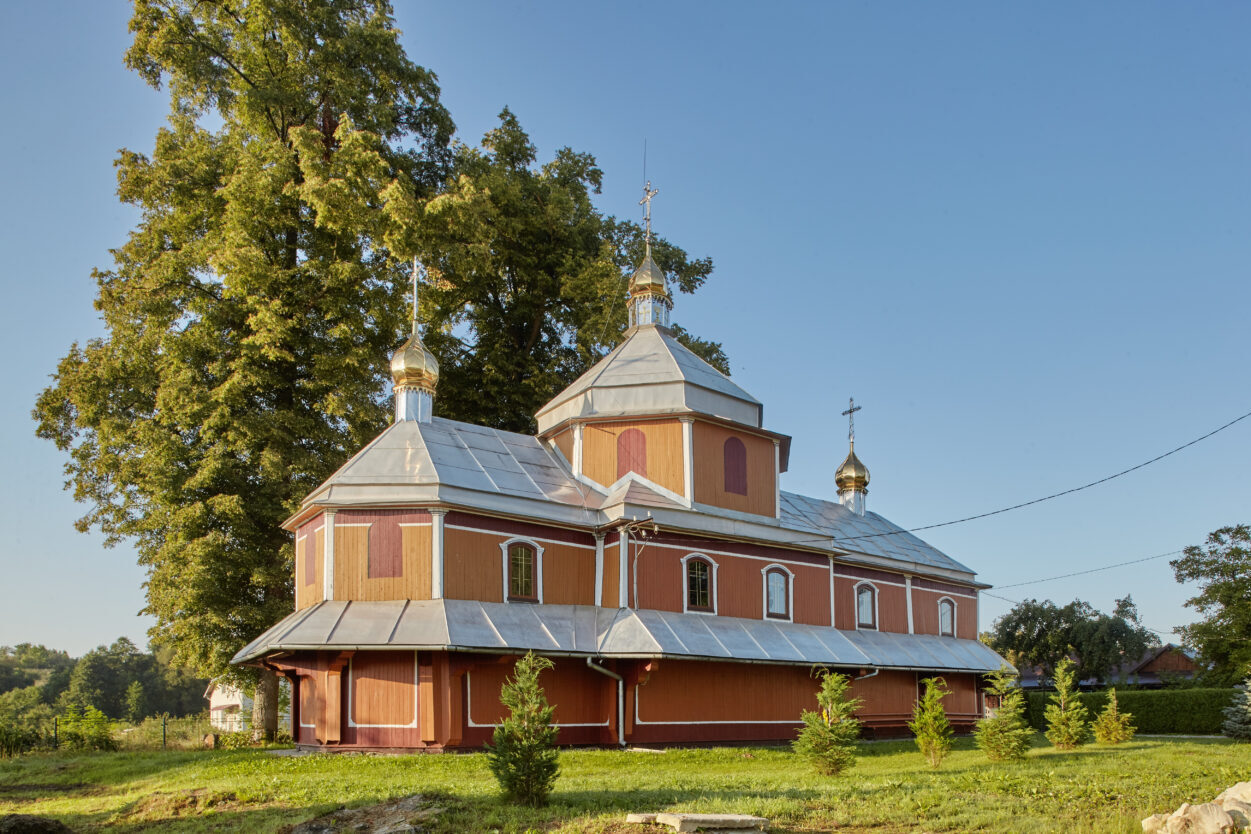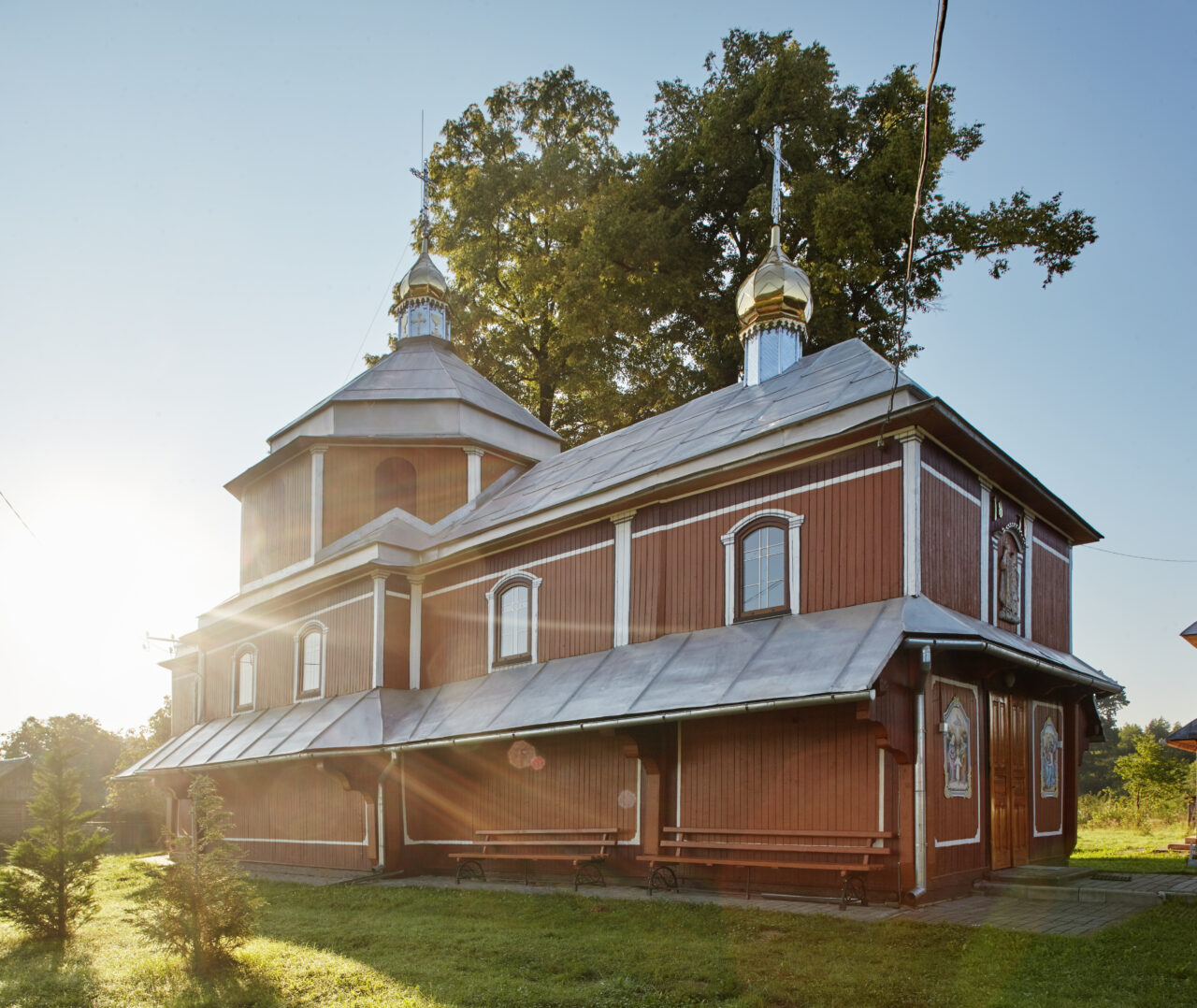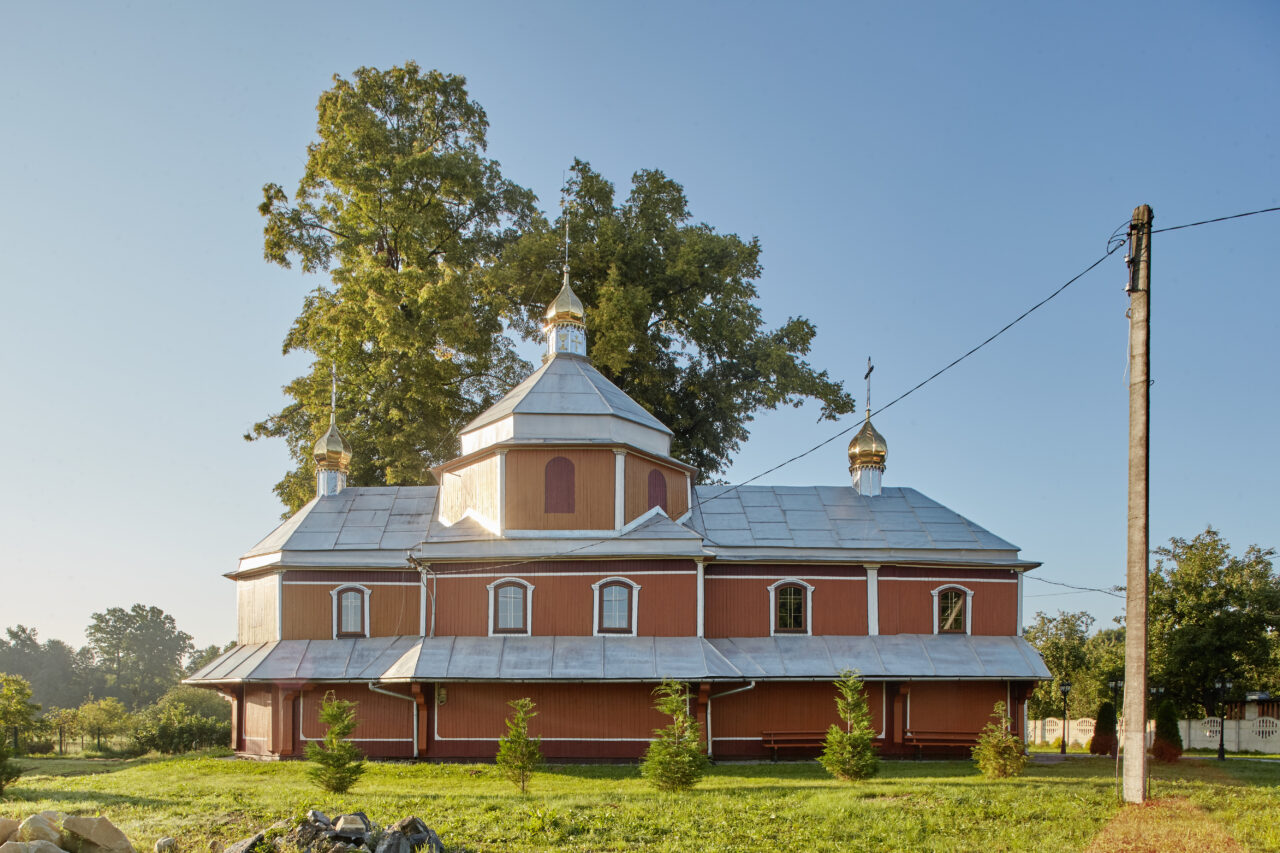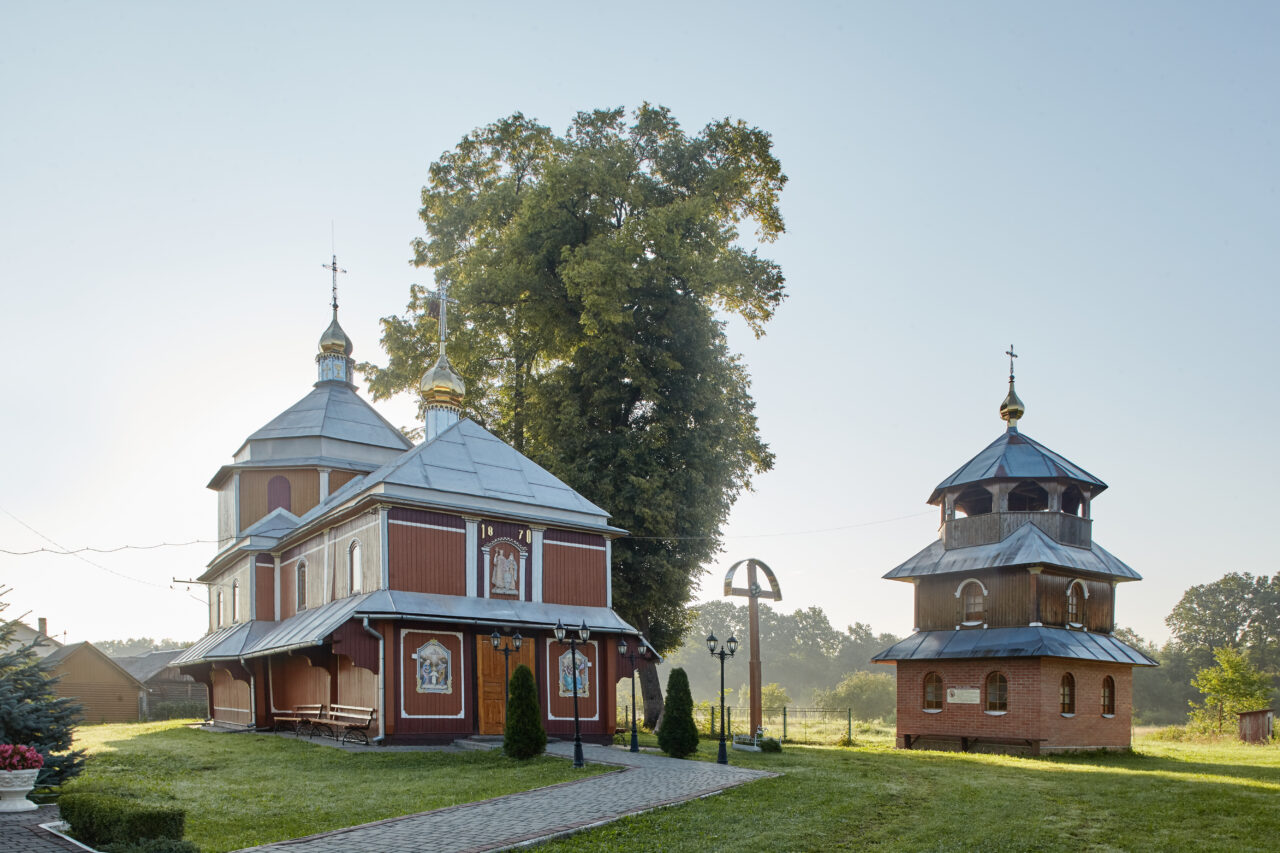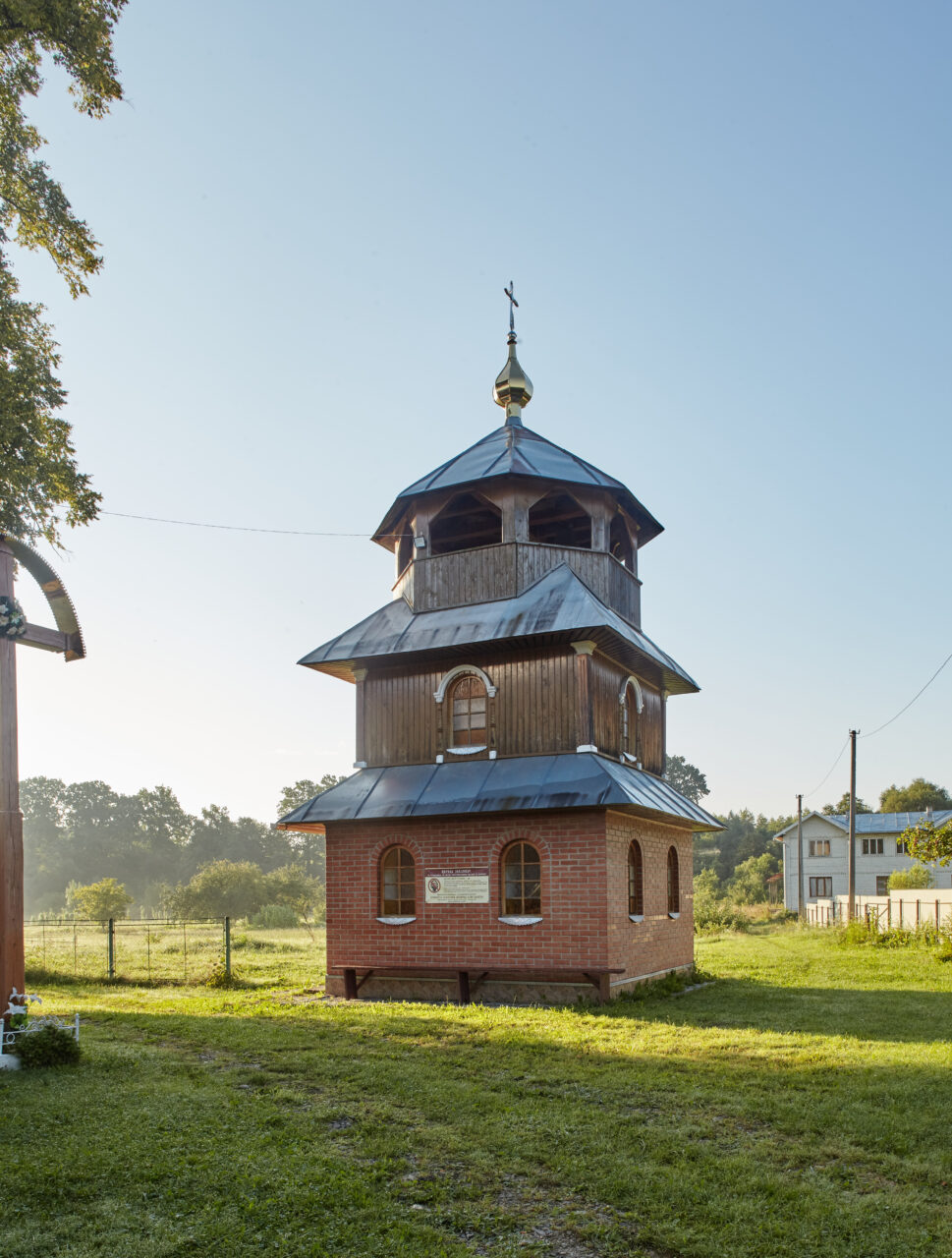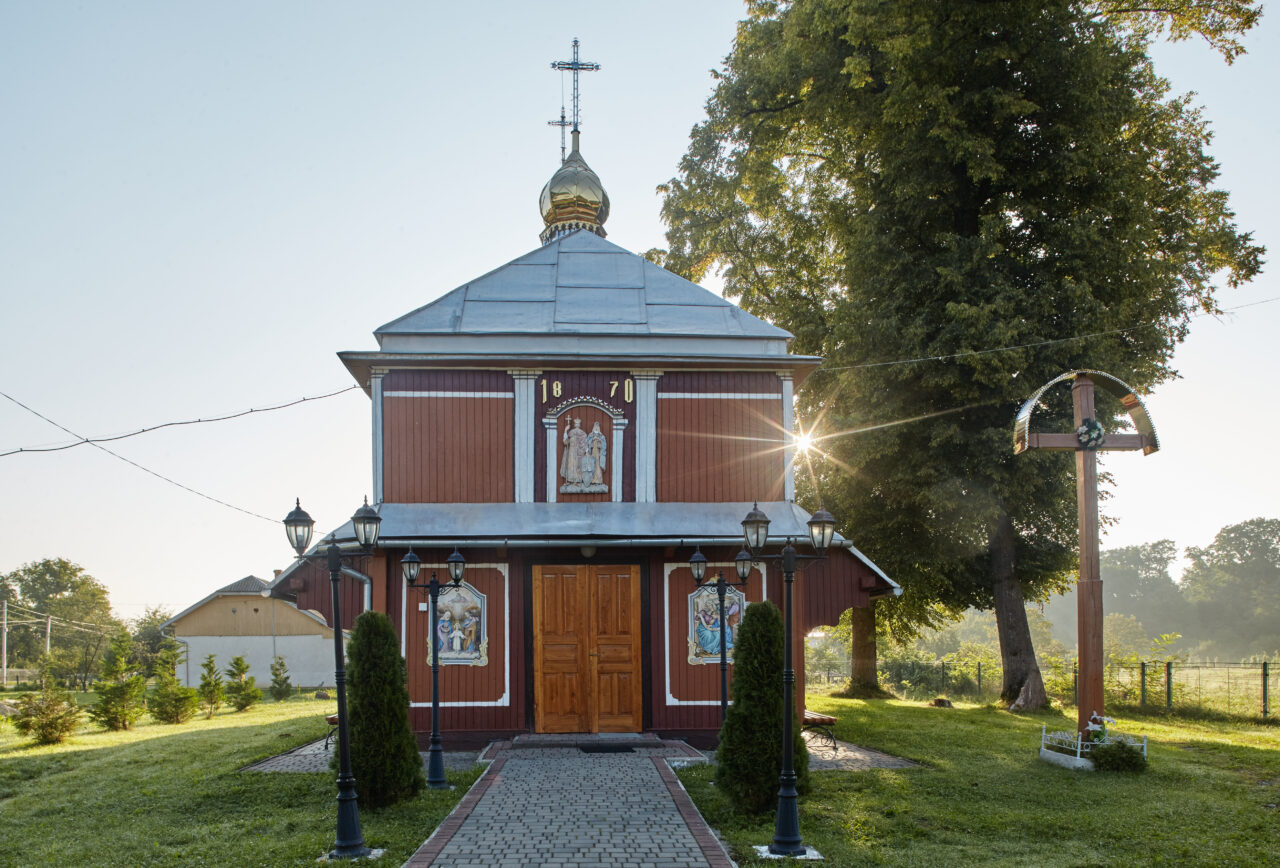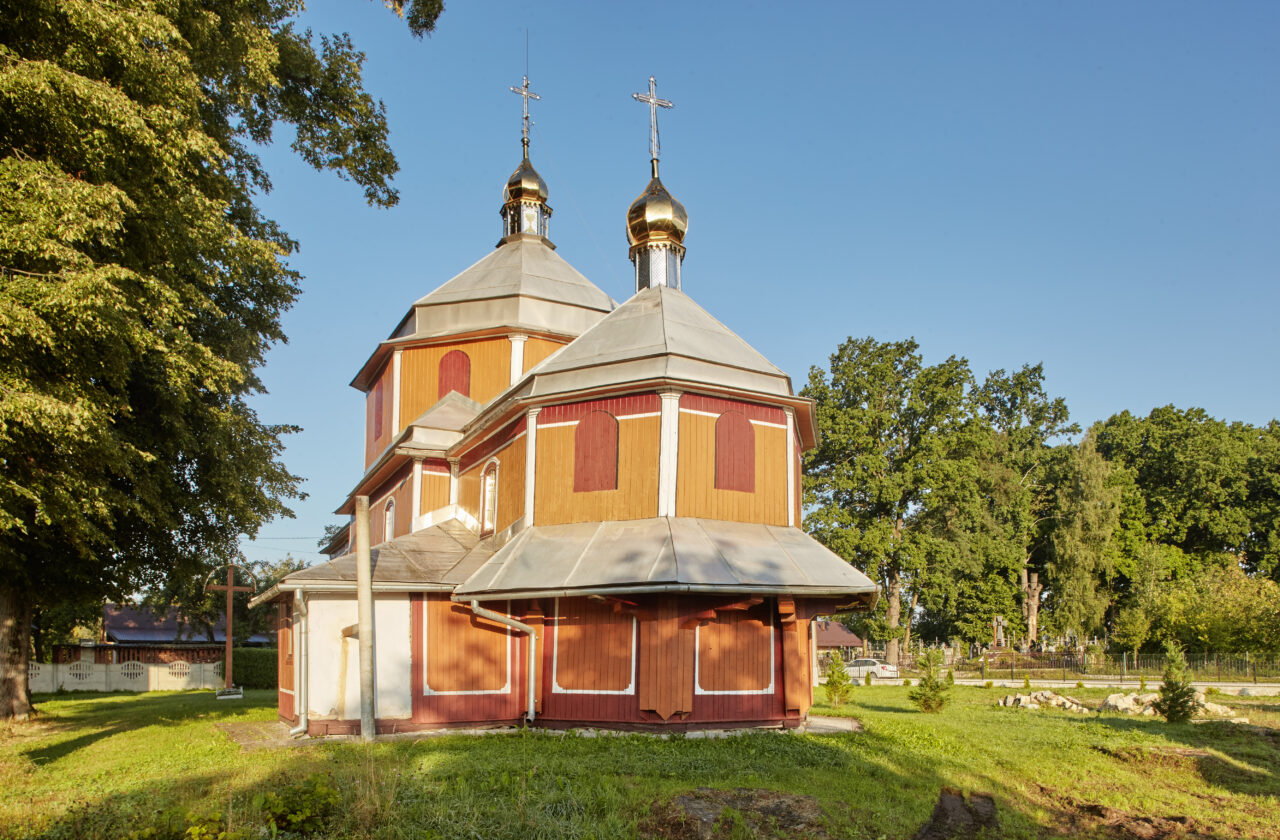In the 17th century, there was a wooden church of St. Basil the Great on the site of the modern church, which belonged to the village of Dovzhok (sometimes called Dovzhska Volia) with a monastery nearby where monks copied liturgical books. Two of the books have survived, namely, The Four Gospels of Dovzhok written in 1596 and described by Ivan Franko in the article The Four Gospels of Dovzhok and the Explanatory Gospel of Cholhany (1603). The book Lenten Triodion (1767) gifted in 1773 to the church of St. Basil the Great by a generous benefactor Ioan Ostashiv is mentioned in the chronicles of the church history and stored in the funds of the Museum of Bolekhiv History named after Roman Skvoriy. It indicates that the Dovzhansky monastery and the church belonged to the prominent centers of book production.
As a result of the religious reform of Emperor Joseph II in the late 18th century, the monastery and the church were demolished. A new wooden church was built in 1870 on the site of the old church of St. Basil the Great. It was a wooden, two-nave, single-domed, Boyko style building. The iconostasis pertains to the Baroque style. Mural paintings date back to the year of the church construction, renovated during the reconstruction and extension in 1993. Three old processional icons remain in the church, namely, icon of St. Basil the Great, St. Nicholas, the Assumption of St. Anne and a privileges charter from 1924 gifted to the church by Metropolitan Andrey Sheptytsky.
From the time of the church construction to the liquidation of the UGCC it was considered a filial church of the Church of the Holy Myrrh-Bearing Women in Bolekhiv. At various times, the fillowing priests served here: Teofil Hornykevych, Ivan Ozarkevych, Teodot Yarema, Mykhailo Hanushevskyi, Volodymyr Sukhyi and Myron Dochylo.
Now it is a functioning church that belongs to the UGCC.
Architectural monument of national importance.

